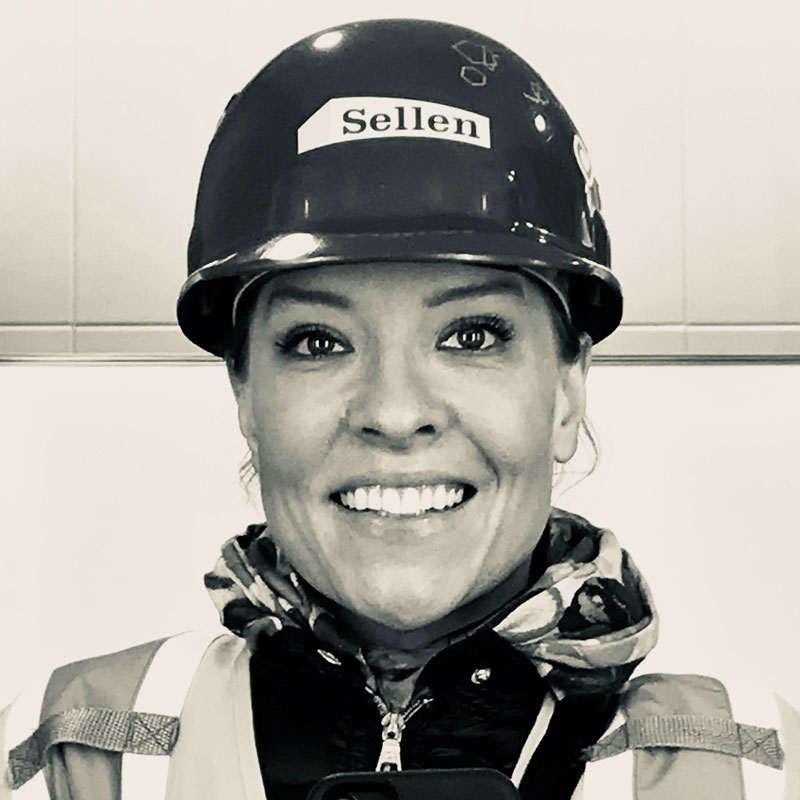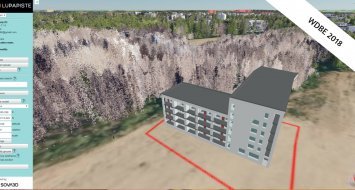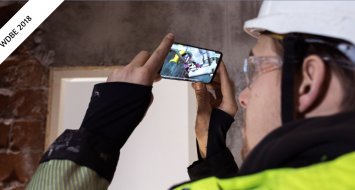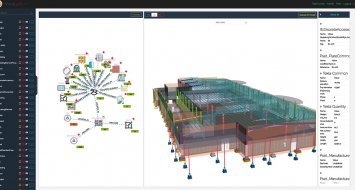
Raising the Bar: Sellen Construction’s Salla Palos and Construction Tech
ke elok. 08 11:03:00 2018
Find out how Palos and Sellen Construction are leading the way in turning Seattle into a real-time incubator for the latest in construction innovation.
When you think about the forefront of innovation in the US, you may first think of New York City or Silicon Valley. However, just like paradigm shifting companies Amazon and Starbucks, the US home of innovation in many fields, including construction, is Seattle. At present, there are between 60 and 70 major construction projects going on in downtown Seattle. That level of growth requires new ideas and new ways of thinking about construction challenges and processes. Leading the way in creating technologies to meet those challenges and improve those processes is Finnish architect Salla Palos.
Creating a career in Seattle
Palos moved to Seattle three years ago and joined Sellen Construction, one of the largest builders in the Pacific Northwest. She focuses on the need for tech innovation to meet the demands of the boom in the construction and real estate industry due to the global megatrend of urbanization.
“A lot of devices had started entering the construction industry, but there was no software to support it,” said Palos. “I started working with the hardware and playing around with it to find ways to make it more user friendly and useful for the industry. We started looking for software developers and realized they didn’t exist for construction.”
One of the challenges Palos saw was that most existing extended reality software was built to examine small areas and design elements. In the field, however, builders need to be able to manage big entities -- from constructability to safety -- and scale from a detail to an entire level. “We’re not building product manufacturers -- we need the ability to experience entire rooms or entire sections of a building,” said Palos.
Creating high tech solutions
Unable to outsource the technology to tech firms and software developers who didn’t understand the industry, Palos began teaching herself to create the applications Sellen project teams needed. “I started looking at how to develop the software using Unity gaming engines and became an in-house developer, creating customized experiences for our field teams,” Palos said.
The result was nothing short of game-changing. “In construction, there are multiple strains that we have to address at the same time,” Palos said. “There is always the cost of the project and the resources, materials, and labor tied into that. If we can verify constructability, quality, and safety before implementation and solve problems before we build, that directly correlates to profitability, cuts waste, enhances workflows, sequences, finishes, and quality and also address safety issues.”
“We are sending out more prepared teams and allowing people to better communicate with each other,” said Palos. “When everyone can experience a 3D version of the project, they can better understand the end result.”
An early pilot project illuminates the difference these technologies can make. A crew had been reading 2D documents for two days in order to understand how to install the structural steel necessary for a tightly enclosed elevator shaft. After 15 minutes with the virtual model in a mixed reality environment, “they could see exactly what they needed to do and what they needed to accomplish it. That shows the power of this technology,” said Palos.
What’s good for the industry is good for Sellen
In many industries new technologies are veiled in secrecy and legal protections, because proprietary knowledge is power. Palos rejects this notion, saying, “My approach has always been open innovation. The construction industry has been doing what it’s doing since the Bronze Age. Even traditional industries like agriculture are using more advanced technology than builders. Tech doesn’t benefit us if it’s proprietary -- it needs to benefit anyone who is in collaboration with us. As it becomes the industry standard it increases efficiency on all of our projects; it’s up to the industry to adapt to new solutions so that we can gain the benefit from it along with them.”
Looking forward to WDBE 2018
Palos will be presenting at the World Summit on Digital Built Environment 2018 (wdbe2018.org), in September in Helsinki, Finland. She plans to talk about the rapid growth of Seattle, the megatrends she is seeing as a result of that growth, and “how Sellen is using digital construction tools to support this growth, which started about five years ago when Amazon started building their headquarters, with Sellen as their head contractor.”
According to Palos, “The scale [of development in Seattle] would be impossible if we were still using paper drawings and did not have these new technologies. It has opened opportunities for the IT industry -- I think the construction industry has become an unexpected innovator for the IT platforms in terms of artificial intelligence and smart city environments. There’s a lot of data available so going forward, if we are able to mine that data and use machine learning and artificial intelligence it allows us to see the city -- and building projects -- in a completely new way.”
The article is provided by AE Partners.
Rakennustekniikka on RIL ry:n julkaisema lehti.
Suosituimmat

How BIM is Revolutionizing Building Control in Finland
KIRA-digi experimentation project has demonstrated that BIM can improve the building permi...

BIM Meets Reality on the Construction Site
Using augmented reality the 3D model and the physical room are brought together on the mob...


